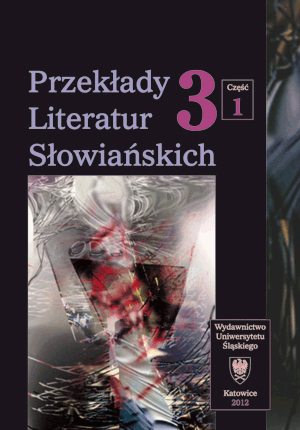Transkulturowość orygniału w przekładzie (na przykładzie powieści "Derviš i smrt" Mešy Selimovicia)
Transculturality of the original in its translation (based on the Meša Selimović’s novel "Derviš i smrt")
Author(s): Iwona StaniosSubject(s): Language and Literature Studies
Published by: Wydawnictwo Uniwersytetu Śląskiego
Keywords: Key words: Bosnia and Herzegovina; cognitive structures; idealized cognitive models; Meša Selimović; transculturality
Summary/Abstract: The article discusses the problem of transculturality that appears in the prototype (that is, the original work), but which partly or completely disappears in its translation. It occurs when a text is translated from a transcultural area (i.e. Bosnia and Herzegovina) into a monocultural area (i.e. Poland). Transculturality of Meša Selimović’s novel Derviš i smrt appears mostly in the language that is characterized by borrowings from Arabic, Persian and Turkish. The borrowings can be divided into 3 categories: words with cultural features, words connected with Islam and words connected with the place (Bosnia and Herzegovina). Since every language comprises the history and culture of the nation, the Serbian language is marked with the 500-year-long Ottoman occupation. It is impossible to find equivalents for those borrowings in the Polish language as there are no words with such emotional and historical features. The translator can use either reduction or amplification in these situations, but it will definitely distort the understanding of the novel as the primary and secondary receivers have different cognitive structures and some words will trigger different idealized cognitive models in their minds. In conclusion, the transculturality makes the novel difficult to translate because of the impossibility to find equivalents and because of the differences in the primary and secondary receivers’ cognitive structures.
Journal: Przekłady Literatur Słowiańskich
- Issue Year: 3/2012
- Issue No: 1
- Page Range: 45-62
- Page Count: 18
- Language: Polish

